Ingrown Toenail Surgery

Ingrown nail (unguis incarnates) is a condition in which a toenail becomes embedded in the skin. Initial symptoms include pain and possible redness. Other symptoms may include mild swelling, warmth, extra skin tissue around the sharp point of the nail, and yellowish drainage. This is the body's response to nail’s irritation of the skin. It may not necessarily mean that infection has occurred.
Ignoring such symptoms won’t make them go away. Left untreated, the condition can lead to skin infection and a level of pain so extreme that it may impede movement. Fortunately, a range of effective treatments is available, including ingrown toenail surgery.
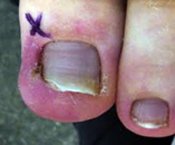
Often trimming your toenails too short may initiate the stage for an ingrown toenail. When trimming the edges of your toenail in order to make it curve to the shape of your toe, it occasionally causes the toenail to grow into the skin of your toe. This causes the sides of the nail to curl down and dig into the skin. Ingrown toenails are particularly found among teenagers, but anyone can develop them. Also, one needs to differentiate between an ingrown nail and an ingrowing nail. An ingrowing nail is not yet infected and has little pain.
Ingrown toenails could be caused by Onychocryptosis. Onychocryptosis is when a patient has incurvated nails. This will lead to more ingrowing of the nail. This often painful condition may cause any of your nails to become ingrown, but the problem generally affects the big toe.
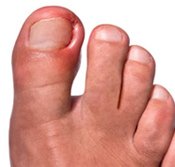
Symptoms of ingrown toenails include redness, swelling, and may soon follow an infection if not treated. Furthermore, they may develop for many reasons. While some cases are congenital, other instances may involve trauma, including stubbing of the toe. However, the most common cause is tight shoe wear or improper grooming and trimming of the nail.
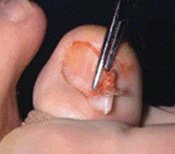
When Ingrown Toenail Surgery is a Must
Ingrown toenails should be treated as soon as they are recognized. Often it can be fixed without a surgical treatment. Dr. Ravaei recommends the following to prevent ingrown toenails from forming after injury:
- Soak the affected foot a few times a day
- Keep the foot dry for the remainder of the day
- Wear comfortable shoes
- Wear open-toe shoes until the condition heals
- Use ibuprofen to relieve pain.
If excessive inflammation, pain, and swelling are present, it is possible that the toenail is infected and it should be treated. In this case, the swelling will become worse, and there may be white- or yellow-colored drainage from the area. A lighter-colored area of the skin may be surrounded by red skin. Although it is unusual, you may develop a fever. Most patients are not aware that the nail is very close to the bone in the foot. Thus, it is quite possible for a patient with an ingrown nail to end up with bone infection. It is much harder to treat a bone infection than an ingrown nail. For this reason, Dr. Ravaei takes ingrown nails very seriously.
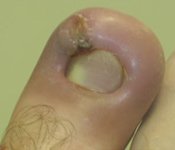
How Surgery Helps
If this is the case, you may need to take oral antibiotics and the nail may need to be partially or completely removed. Dr. Ravaei may need to perform ingrown toenail surgery to remove a portion of the nail, the underlying nail bed, and some of the adjacent soft tissues. At times when part of the nail is removed, some form of anesthesia is required. Most of the time, the anesthesia is a local anesthetic. This is the same anesthetic that patients would receive at the dentist.
Surgery is effective in eliminating the nail edge from growing inward. For those who may have chronic and recurrent infection in their ingrown toenails, they may need to have it permanently removed. This requires part of the nail to be burned with acid or laser. Dr. Ravaei almost never burns the whole nail root since he does not think this will present a cosmetically appealing result.
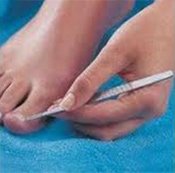
If the patient's infection continues to come back, Dr. Ravaei may remove part of the patient’s ingrown toenail. He will inject your toe with an anesthetic and use scissors in order to cut away the ingrown part of the toenail, thus preventing any disturbance with the nail bed. An exposed nail bed may be very painful, and recovery is steady, as it may take 3-4 months for your nail to re-grow.
After many years of experience in the field, it has become evident that Dr. Ravaei is the most competent and trust-worthy podiatrist to go to for ingrown nail surgery. He is recommended by many and patients have had no complaints.













